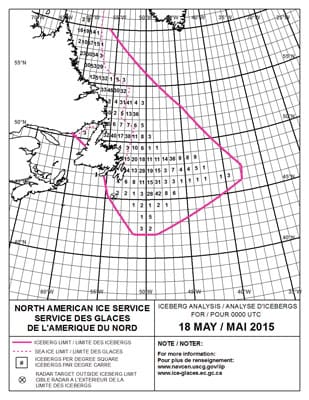By 1841 the packet lines from New York City to Liverpool were already well established; companies with the now-famous names of Black Ball and the Swallowtail Lines regularly operated a schedule of ships carrying both cargo and passengers back and forth across the Atlantic since the early part of the century. The sinking of William Brown in 1841 was a terrible tragedy that notably foreshadowed the sinking of Titanic 71 Aprils later.
For those who could afford first-class accommodation, the passages were less than miserable; for those in steerage the passage must have seemed like hell. This was especially true in the winter months on the westbound run from Liverpool. Sinking ships with loss of life were unfortunately almost commonplace. Every so often though, an especially horrific foundering captured the headlines.
One such instance was William Brown. The vessel — mostly likely a brig or barquentine — under the command of George Harris, departed Liverpool with 17 crew and 65 passengers, mostly poor Irish and Scottish immigrants, in March of 1841 bound for Philadelphia. Five weeks out of Liverpool, on the night of April 19, William Brown, with all sails drawing, struck an iceberg about 250 nm south of Cape Race, Newfoundland, at N 43° 30’ by W 49° 39’. The skipper and eight crew took to the ship’s jolly boat while nine crew and 32 passengers went aboard the long boat. Thirty-one souls, many of them children, went down with the ship.
The long boat was in danger of foundering and crewmember Alexander Holmes took command. He had to make some quick decisions: in order to save some, he would have to sacrifice others. He forced 14 men and two women out of the boat into the freezing sea. Ultimately, all the male passengers, except for two married men and a young boy, and two women perished. Even by the rough and tumble standards of the day, this was murderous behavior.
The longboat was later spotted by a passing ship and all aboard were rescued. When the crew reached America charges, were brought against them, but they had all scattered and only Holmes was apprehended and put on trial He was indicted for manslaughter, receiving a laughable six-month sentence and a $20 fine. However light his sentence though, the trial raised an issue that “self-preservation is not always a defense to homicide.” The Holmes case became important in the legal canon, as it established a fact that “seamen have a duty to passengers that is superior even to their own lives.” Even though mariners understand this, there are those who place their own safety above their passengers, e.g., the captains of the cruise ship Costa Concordia and of the Korean ferry Sewol.
Let’s join the captain while he’s taking a noon sight of the sun. The DR on April 10 is 43° 22’ N by 46° 15’ W. HE is 25 feet. There’s no sextant error. He’s taking a lower limb sight of the sun. Sextant altitude of the lower limb of the sun is 54°32’. Use 2015 Nautical Almanac.
A. What is the time of LAN for the noon sight?
B. What is Ho?
C. What is the latitude?
Answers:
A. Time of LAN in GMT is 15:06:00 based on DR
B. Ho reduced from Hs is 54° 42.6’
C. Using the declination for 1500 hrs the latitude is N 43° 6.3’

